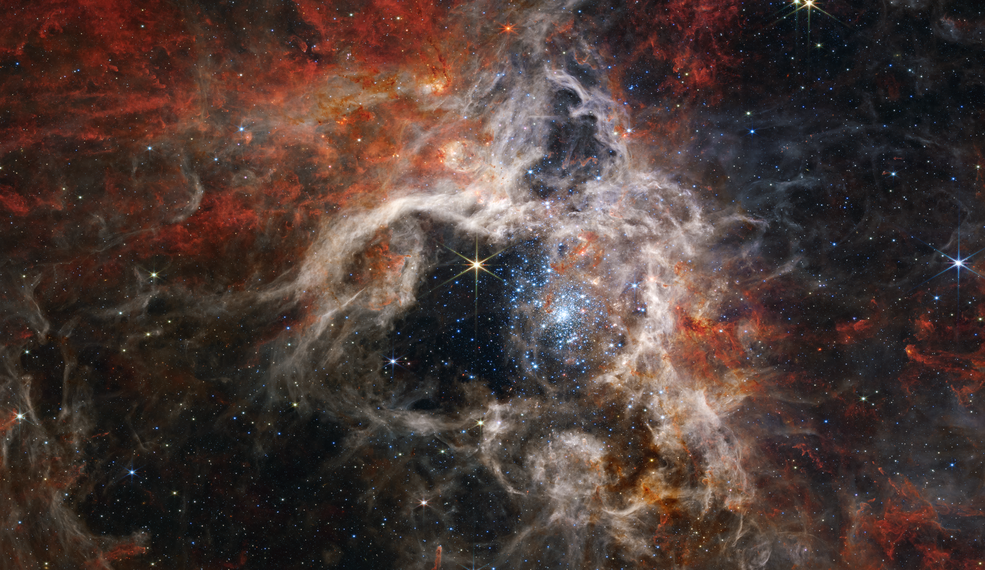Resources, papers an information
The Tarantula Nebula is a large emission nebula located in the southern constellation Dorado. The star-forming region lies within the Large Magellanic Cloud (LMC), a small satellite galaxy of the Milky Way and one of the nearest galaxies to our own, located on the border between Dorado and Mensa. The nebula is also known as 30 Doradus. It has the designation NGC 2070 in the New General Catalogue.
The Tarantula Nebula is one of the better known nebulae not listed in the Messier catalogue. It is the most active region of star formation known in the Local Group of galaxies, as well as one of the largest, spanning 600 light years, or 13 arc minutes across the sky. The nebula contains more than 800,000 stars and protostars. The newly formed stars are frequently hidden within clouds of dust and can only be seen in infrared wavelengths.
The nebula is extremely luminous. It lies at a distance of 160,000 light years from Earth and has an apparent magnitude of 8. Because it lies so far to the south, it is visible primarily from southern latitudes.
If it were as close to the solar system as the Orion Nebula, the Tarantula Nebula would be so bright that it would cast shadows. The Orion Nebula, while more famous, especially in the northern hemisphere, is only a hundredth the size of 30 Doradus.
https://www.constellation-guide.com/tarantula-nebula-30-dorado/
Papers and publications
https://arxiv.org/pdf/2009.05136.pdf We present an optical analysis of 55 members of R136, the central cluster in the Tarantula Nebula of the Large Magellanic Cloud. Our sample was observed with STIS aboard the Hubble Space Telescope, is complete down to about 40 M⊙, and includes seven very massive stars with masses over 100 M⊙.
https://www.eso.org/sci/publications/messenger/archive/no.181-sep20/messenger-no181-22-27.pdf The VLT-FLAMES Tarantula Survey (VFTS) was an ESO Large Programme that has provided a rich, legacy dataset for studies of both resolved and integrated populations of massive stars. Initiated in 2008 (ESO Period 82), we used the Fibre Large Array Multi Element Spectrograph (FLAMES) to observe more than 800 massive stars in the dramatic 30 Doradus star-forming region in the Large Magellanic Cloud.
https://arxiv.org/pdf/1911.02047.pdf A review of the properties of the Tarantula Nebula (30 Doradus) in the Large Magellanic Cloud is presented, primarily from the perspective of its massive star content. The proximity of the Tarantula and its accessibility to X-ray through radio observations permit it to serve as a Rosetta Stone amongst extragalactic supergiant HII regions since one can consider both its integrated characteristics and the individual properties of individual massive stars.

